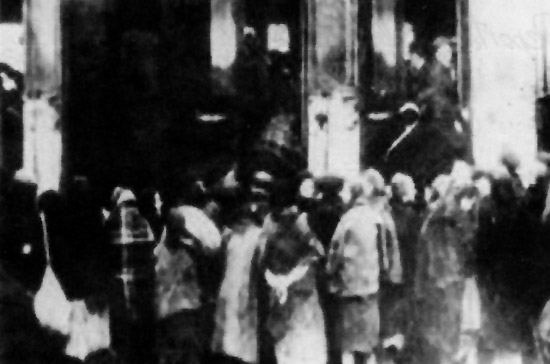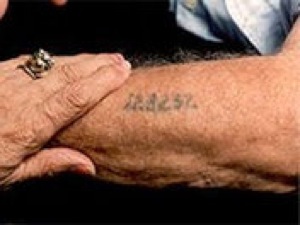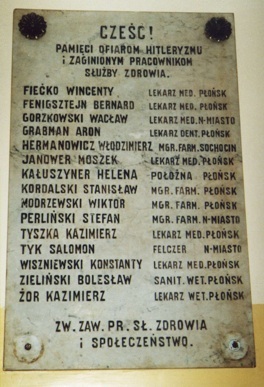
The Holocaust: Plonsk Poland |
|||
At the
outbreak of World War II there were about 6,000 Jews in Plonsk, but others
estimated 8,200. The German
army occupied the town September 3rd
1939. Some Jewish men were sent to the forced-labor camp of Nosarzewo, and Jewish women to the forced labor camp in
Spierc. Few of them survived. A closed
ghetto was established in May 1941. The Jewish
Community was liquidated when12,000 Jews from
Plonsk and the vicinity were sent to Auschwitz in four transports between
November 1st and December 5th 1942. After the
war, the Jewish community was not reconstituted. Organizations of former
residents of Plonsk are active in Israel, the United States, and Argentina. Link to US Holocaust Memorial Museum related information. |
|||
Deportation of Jews from Plonsk, 1942 This picture was send to Ana by Scott Sugarman. It was taken by an individual who took the the photo during the deportation of the Jews from Plonsk to Auschwicz in 1942, and was sent to his grandfather who was a survivor. It is not from a book. This is the first time that this picture will be viewed by the world's Jewish people.
|
|||
This picture shows Jewish persons running when the germans wanted to transport them to the Camps. |
|||
|
Gallows in the Ghetto of Plonsk |
|||
A numbered arm |
|||
Select this link to view additional photos of Plonsk during the Holocaust The photo page will open in a new browser window or tab |
|||
Death certificates obtained by Ana Nuta from Auschwitz Museum where her Uncles Chitt and Moshe Izraelowicz, her mother's elder brothers, were murdered in Auschwitz in 1943. Select name to view document. Also, the Yad Vashem death certificate for Jankiel Blachman, Plonsk resident, who died in 1944.
|
|||
Map of the Ghetto of Plonsk and vicinities. As you can see, there is a gallows in the drawing. The Synagogue was inside the Ghetto. It takes a great portion of the Shtetl. 
|
|||
Plaque translation: Greetings! In memory of the victims of Nazism and health-service workers lost.
|
|||
| © Copyright 2008-9 Ana Nutta |

 Jews escaping from the
nazis in Plonsk
Jews escaping from the
nazis in Plonsk





